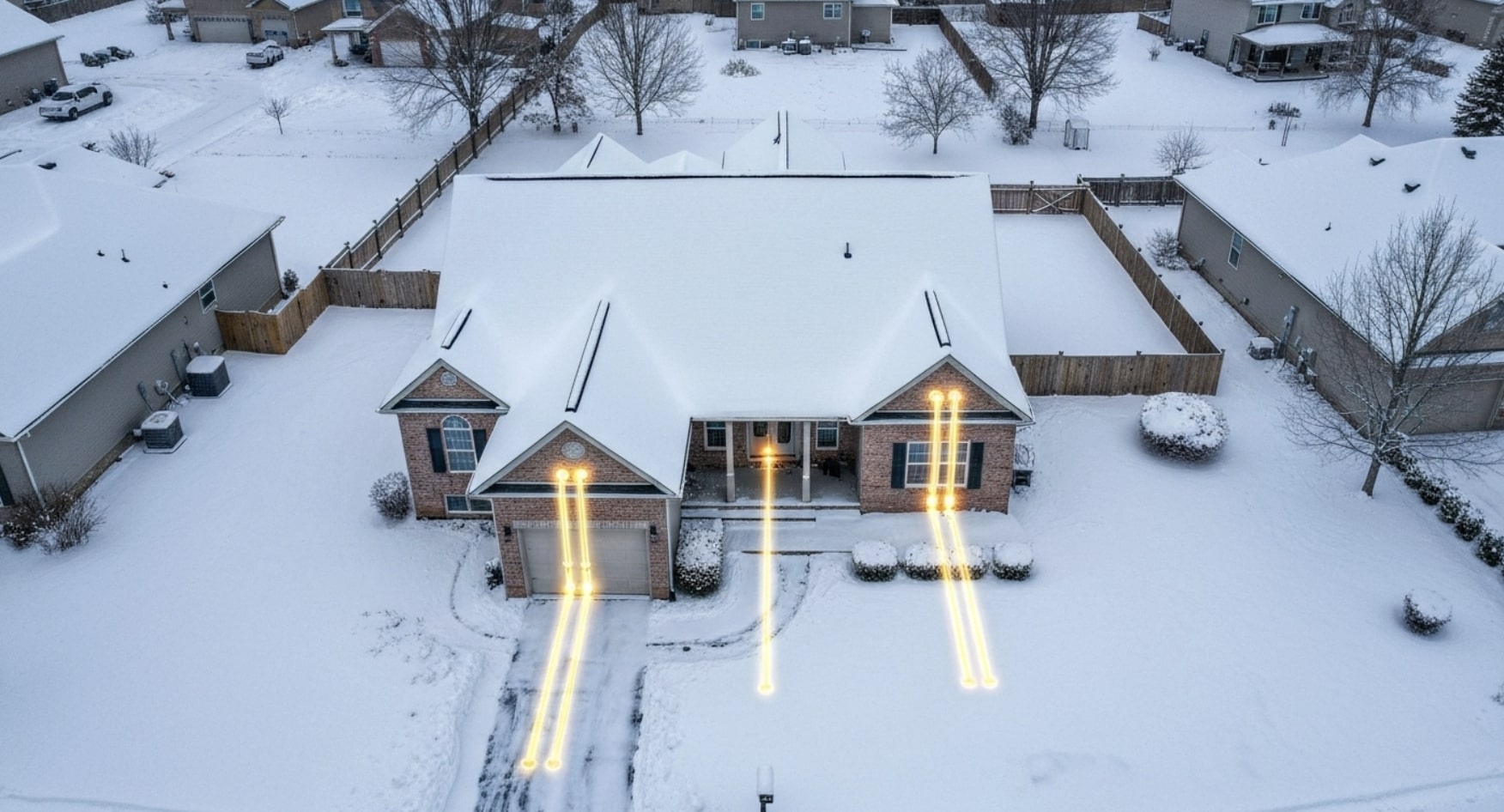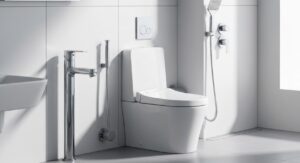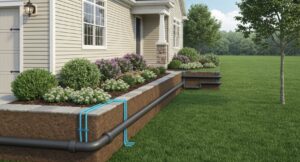The beauty of winter often comes with a hidden threat to your home: a frozen pipe. When temperatures plummet, the water inside your pipes can freeze, expand, and potentially burst, leading to significant water damage and costly repairs. The good news? Preventing this disaster is easier than you think. With a few simple preparations and habits, you can protect your water pipes from the harsh cold weather and ensure your home stays safe and dry all season long. This blog will guide you through essential steps to prevent frozen pipes and avoid the headaches associated with it.
Understanding Why Pipes Freeze in Winter
The science behind a frozen pipe is both simple and powerful. Unlike most substances that contract when they freeze, water expands by about 9 percent. This expansion inside a confined space, like your home’s water pipes, creates immense pressure that can exceed the strength of metal or plastic.
This pressure is the real culprit behind winter plumbing disasters. It’s not the ice itself that breaks the pipe, but the force of the expanding water trapped between the ice blockage and a closed faucet. The pipe gives way at its weakest point, leading to a burst.
That’s why it’s critical to be vigilant when the temperature dips. According to the U.S. Environmental Protection Agency, the “temperature alert threshold” is 20°F, as this is when a frozen pipe becomes a significant risk for many homes. Taking action before or during this cold weather is your best defense.
Which Pipes Are Most Vulnerable to Freezing
Not all water pipes face the same risk of freezing. Pipes in unheated or poorly insulated areas—like basements, crawl spaces, attics, garages, and exterior walls—are most vulnerable. Focus prevention efforts on these locations:
Vulnerable Pipe Locations & Risks:
- Outdoor hose bibs/sprinklers: Direct exposure to freezing temperatures
- Unheated basements/crawl spaces: Surrounded by cold air
- Garages: Often uninsulated and frequently opened
- Attics: Lack consistent heat
- Kitchen/bathroom cabinets on exterior walls: Can trap cold air
Target these areas to prevent frozen pipes.
Essential Preparations Before Winter Hits
The best way to deal with a frozen pipe is to make sure it never happens in the first place. Taking some preparatory steps before the first deep freeze can save you from a major headache later. Winterizing your water pipes is a straightforward process that fortifies your home against the coming cold weather.
These proactive measures focus on removing water from vulnerable lines and protecting the pipes that will remain in use throughout the winter. Let’s look at some specific actions you can take to insulate your plumbing and seal your home.
Insulating Exposed Pipes Effectively
To prevent frozen pipes, insulate any exposed water pipes in unheated areas like attics, basements, crawl spaces, and garages. Use pipe sleeves, heat tape, or heat cable for added protection—available at hardware stores. Even wrapping pipes with ¼-inch newspaper can help in an emergency. Focus on insulating hot and cold water pipes under sinks and any plumbing in unheated spaces.
Sealing Gaps and Drafts Near Water Lines
Insulation is important, but it’s most effective when cold air isn’t reaching your water pipes. Sealing air leaks is essential for winterization, as drafts can freeze pipes even if the room feels warm. Inspect your home for cracks or gaps in walls, foundations, window and door frames, and areas where utility lines enter. Even small openings can let in enough cold air to endanger pipes. Use caulk or spray foam to seal these gaps—this protects your pipes and lowers heating bills. Focus on:
- Outdoor water spigots
- Pipe entry points
- Electrical wiring and dryer vent gaps
- Foundation or siding cracks
Proactive Daily Habits to Prevent Frozen Pipes
Once you’ve prepared your home for winter, a few daily habits during cold snaps can provide an extra layer of security. These simple actions help maintain a warmer environment around your plumbing and can make all the difference on the coldest nights. They are easy to do and can prevent the costly damage of a frozen pipe.
Many people wonder if old adages, like letting a faucet drip, actually work. The answer is yes, and it’s one of several proactive habits you can adopt. Let’s explore how managing your home’s heat and water flow can protect your water pipes.
Managing Thermostat Settings and Heat Circulation
Your home’s heating system is a powerful tool against a frozen pipe. While it might be tempting to lower the thermostat at night to save money, it’s wiser to keep the temperature consistent during severe cold weather. A sudden drop in temperature overnight can put your water pipes at risk.
Another simple trick is to improve heat circulation to vulnerable areas. Open the cabinet doors under your kitchen and bathroom sinks to allow warmer air from the room to circulate around the plumbing. If you have water supply lines in your garage, be sure to keep the garage door closed as much as possible to trap heat inside.
During a cold spell, follow these simple heating habits:
- Keep your thermostat at a steady temperature, day and night.
- Open cabinet doors in kitchens and bathrooms.
- Keep garage doors closed to protect any water pipes inside.
- If you go away, set the heat to no lower than 55°F.
When and How to Let Faucets Drip
Yes, letting a faucet drip really does help prevent a frozen pipe. It’s a simple but highly effective tactic during extreme cold weather. The reason it works is twofold: first, running water, even a trickle, makes it much harder for ice to form. Moving water freezes at a lower temperature than still water.
Second, and more importantly, an open faucet relieves the pressure that builds up inside a pipe if it does start to freeze. This pressure is what causes pipes to burst. By giving the expanding water an escape route, you can prevent a catastrophic failure.
To use this method correctly, follow these steps:
- Identify the faucet that is farthest from where the water main enters your home.
- Turn on the cold water to a slow but steady drip or trickle.
- If you are unsure which pipes are most vulnerable, you can let multiple faucets drip.
- This is especially important for any faucet served by pipes exposed to the cold.
Detecting and Responding to Early Warning Signs
So, how can you tell if your water pipes are starting to freeze? The most obvious and common sign is a sudden drop in water pressure. If you turn on a faucet and only a trickle—or no water at all—comes out, you should immediately suspect a frozen pipe.
Another telltale sign is visible frost on an exposed pipe. If you can see ice forming on the outside of your plumbing, it’s a clear indication that the water inside is likely frozen or close to it. This frozen area is often located against an exterior wall or where your water service enters your home.
Be on the lookout for these warning signs during cold weather:
- Very low water flow from a faucet.
- No water coming out of a faucet at all.
- Visible frost or ice on the surface of a pipe.
- Strange smells coming from a drain or faucet, which can indicate a blockage.
Immediate Steps to Take if You Suspect Freezing
If you suspect you have a frozen pipe, don’t panic. The first thing you should do is keep the affected faucet open. As you begin to thaw the frozen area, this will allow the melting water to flow through, which helps speed up the thawing process and relieves pressure.
Next, you need to gently apply heat to the frozen section of the pipe. You can use an electric heating pad, a hairdryer, or towels soaked in hot water. Never use an open flame device like a blowtorch or propane heater, as this is a serious fire hazard and can damage the pipe. Apply heat until full water pressure is restored.
If you suspect a frozen pipe, take these immediate actions:
- Keep the faucet open.
- Apply gentle, safe heat to the frozen section.
- Do not use any open flame to thaw the pipe.
- If you cannot find the frozen area or cannot thaw it, call a licensed plumber right away.
From Stress to Relief—We Fix Plumbing Problems Right
Dealing with a frozen pipe is stressful, and trying to thaw it yourself isn’t always possible or safe. When you’re facing a stubborn blockage or can’t locate the frozen area, you need fast, reliable help. At Target Plumbers, we understand the urgency of plumbing emergencies, especially during harsh cold weather. Our team of licensed professionals is equipped with the right tools and expertise to safely thaw your water pipes and inspect them for any potential damage.
Don’t let a frozen pipe disrupt your life or lead to catastrophic water damage. We are here to provide peace of mind and expert solutions. From emergency repairs to preventative maintenance, Target Plumbers is your trusted partner for keeping your home’s plumbing in perfect working order, no matter what winter throws your way.
Conclusion
In conclusion, learning essential steps to prevent frozen pipes, and knowing how to react when faced with this issue can save you time, money, and stress. Regular maintenance and preventative measures, such as insulating vulnerable pipes and maintaining a consistent indoor temperature, are key to avoiding freezing in the first place. Remember that being proactive about your plumbing not only protects your home but also ensures you stay comfortable during those biting winter months. If disaster does strike, don’t hesitate to seek professional help from Target Plumbers.
Winter prep is key to plumbing maintenance—explore our full checklist in Smart Plumbing Maintenance for Modern Homes.
Frequently Asked Questions
At what temperature should I start worrying about frozen pipes?
You should be concerned about a frozen pipe when temperatures are forecast to drop to 20°F or below. While water freezes at 32°F, this lower temperature is considered the danger zone for uninsulated water pipes, especially in a drafty or unheated frozen area of your home.
Does dripping faucets really stop pipes from freezing?
Yes, letting a faucet drip is a very effective way to prevent a frozen pipe. The constant movement of water through the pipes makes it harder for ice to form. It also relieves the immense pressure that builds in water pipes, which is what causes them to burst during cold weather.
What should I do if my pipes have already frozen?
If a pipe has already frozen, keep the faucet open to allow water to flow as it thaws. Apply gentle heat to the frozen area using a hairdryer or heating pad—never an open flame. If you can’t locate the blockage or thaw the pipe yourself, call a licensed plumber immediately.






